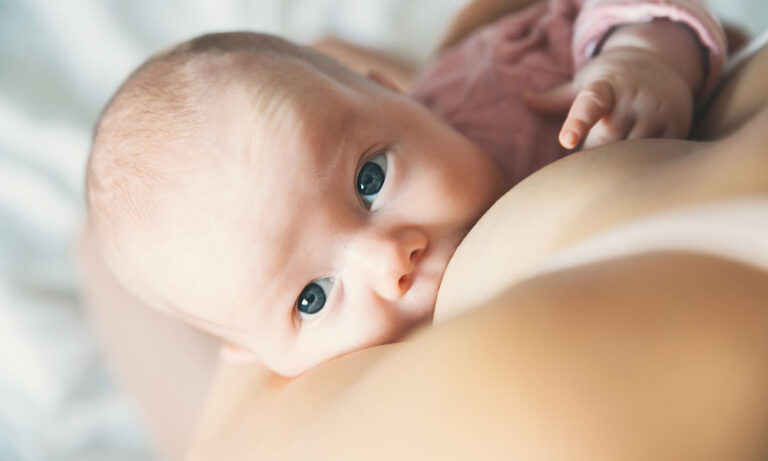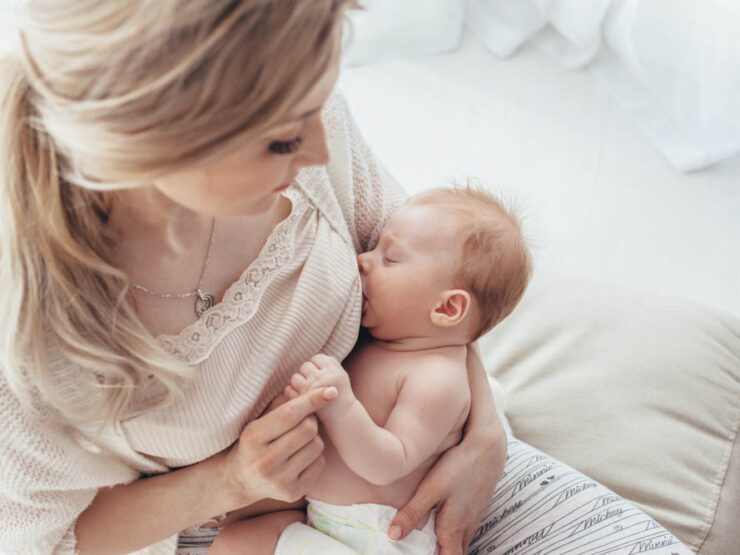If there is one thing I hated while I was producing milk for my little one, it would have to be cracked nipples from breastfeeding!
While I loved giving my baby milk and feeding him when needed, I couldn’t stand the pain while he sucks on my nipples, ending up with me wincing or having to go for other alternatives, which I didn’t want.
Fortunately, I found many remedies and treatments to heal and prevent cracked nipples from happening again.
I know many mothers also suffer from cracked nipples breastfeeding. To help you out, I’ll be showing you everything you need to know about this issue and how to treat it right.
Read more: The Things You Need to Consider About When to Change Nipple Flow
What Do Cracked Nipples Feel Like?
When breastfeeding, you may have experienced discomfort or pain while your baby sucks milk, even after the feeding session. That is a sign of cracked nipples from breastfeeding!
Other signs and symptoms of cracked nipples include:
- Burning, shooting, or throbbing pain in your nipples when baby latches on
- Blistered, cracked, grazed, or fissured nipples
- Bleeding of the nipple area
- Infection of the nipples, either inflammation, swelling, redness, or pus
If you feel tenderness around your nipple area during the first few weeks of breastfeeding, then not to worry as it’s perfectly normal.
But if you feel any of the symptoms I mentioned above, then it is cracked nipples and must be treated immediately.
Why Do I Have Cracked Nipples?
Here are some of the causes of cracked nipples:
- The main cause of cracked nipples is because of a poor latch or incorrect positioning while feeding your baby. Your little one might not be taking the whole nipple into their mouth, rubbing on his hard plate. Or worse, your baby’s jaws are clamping down and biting hard on the nipple!
- Moisture from not drying after feeding would soften the skin, increasing the chances of damage. It can also happen if you are wearing wet breast pads or those that hold moisture.
- If you wash your nipples too much or use chemicals which strip your nipples’ natural oils away (their protection!), then they are more vulnerable to damage, just like chaffed lips.
- Thrush, which is a yeast-like fungus growing on your skin (in this case, the nipples), is another cause. It can come from your baby, who may have oral thrush. This might result in yeast infection.
- Other cases, you may have a skin condition that contributes to sore and cracked nipples, such as psoriasis, eczema, or dermatitis.
Can You Still Nurse Your Baby?
With that being said, you can still nurse your baby with cracked nipples once you have identified the problem.
If it is a serious issue, then it’s best to consult a doctor for proper treatment before feeding your baby again. Or, you can continue to nurse your baby while the nipples heal (after following the treatments I’ll be mentioning below).
It’s completely fine to nurse your baby with cracked nipples, though you can stop if it’s too painful. If that does happen, then you can let your nipples rest and use a breast pump for a day, bottle-feeding your baby.
Remedies to Treat Cracked Nipples
I know how uncomfortable the pain is when breastfeeding with cracked nipples. That’s why here are the top solutions that worked very well for me, as well as many mothers around the world!
- Wear a cotton and non-underwired bra to allow air to circulate. If you use pads, then change them every feed and use one without any plastic backing.
- Avoid using chemicals or products on your nipples which would dry or damage the skin, such as rough towels or certain shampoos.
- Use nipple cream that you won’t need to wash off before breastfeeding. Go for creams that contain natural oils to maintain your nipples’ protection.
- Express a bit of milk and smear it on your nipple.
- You may want or need to let your breasts rest, either offering your breast without the cracked nipple or to go for short feeds on it. Make sure that your baby has the proper latch and positioning.
- If ever you feel like this is a cause of a medical issue, then contact your doctor today for pain relief or medicine to make it safe for both you and your baby.
Here is an informative video showing you the proper way on how to heal cracked nipples breastfeeding:
How to Prevent Cracked Nipples
Now that you know about treating your cracked nipples from breastfeeding, how can you prevent it from happening again? Here are the tips to follow:
- Ensure that you position yourself correctly and comfortably when breastfeeding. Have your baby latch on to your breast well, encouraging him to open his mouth wide enough to latch onto your nipples. Pull him close and adjust you or your baby’s position as needed.
- Make sure that your milk is removed from the breasts to avoid flat nipples because of its fullness. You may need to express milk by hand or pump.
- When wearing breast pads or shields, be sure always to wear those that are dry and do not moist easily. Also, wipe your nipples well after feeding to ensure no moisture that results to cracked nipples.
In Conclusion
When it comes to treating sore or cracked nipples breastfeeding, you can find a variety of remedies and treatments that aren’t only easy, but effective in no time.
Through knowing what causes your cracked nipples and finding the optimum solution based on that reason and the materials you have available at home, then you won’t need to worry or dread breastfeeding your little one again!
I hope that this article on cracked nipples breastfeeding helped you become more knowledgeable about what to do if ever you do experience these problems with your breasts.So don’t wait any longer and begin to follow these treatments to treat your nipples today.
If you have any questions or would like to share your tips and experiences on how to remedy cracked nipples breastfeeding, then comment down below. I would love to hear what you have to think.


